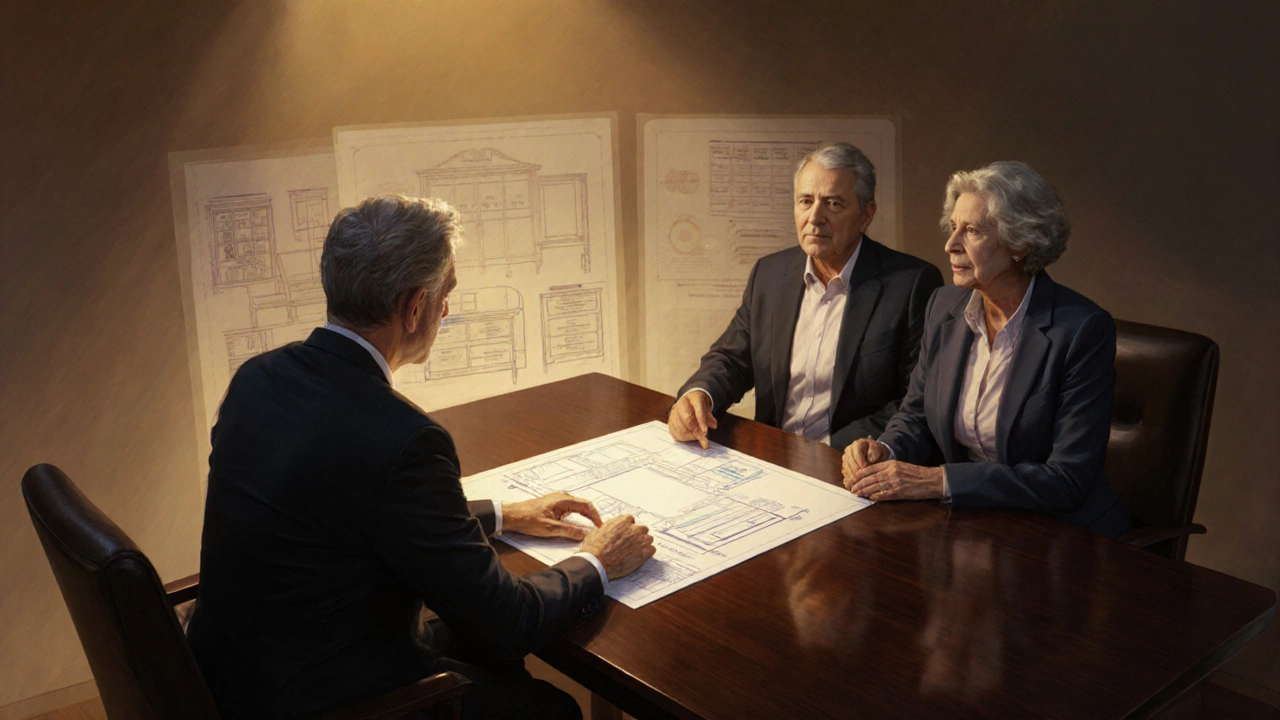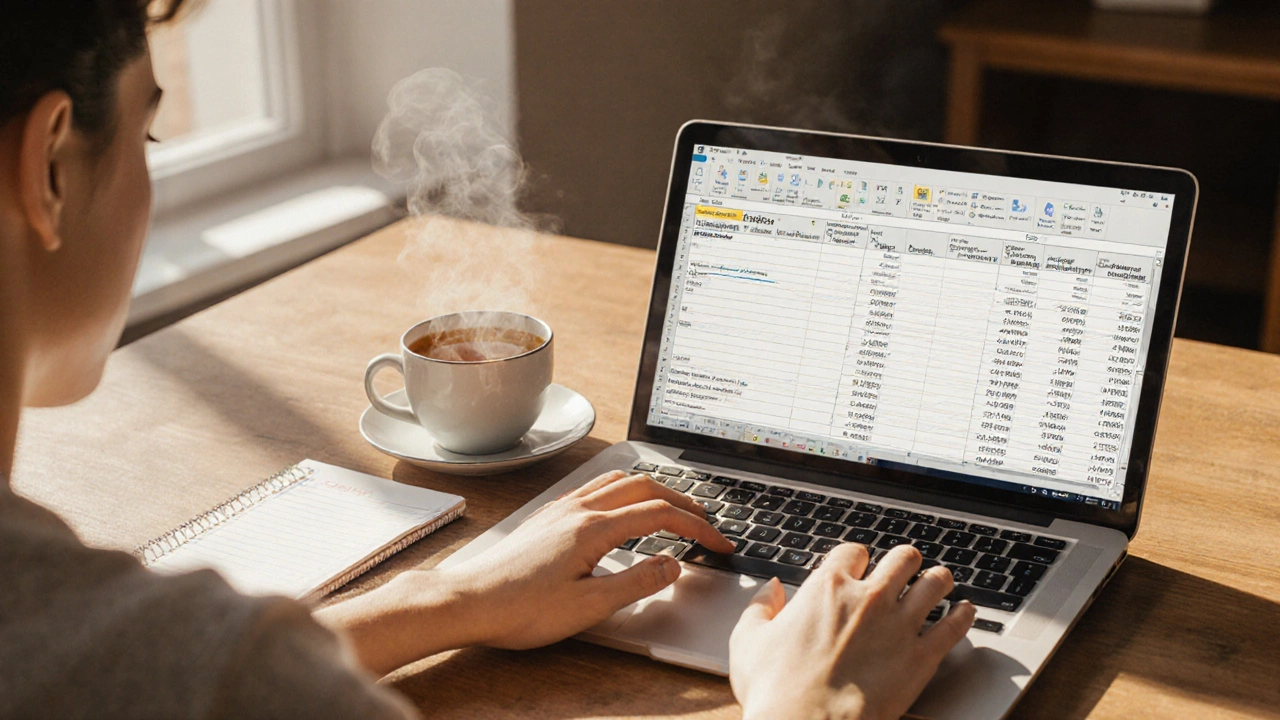Furniture Payment Calculator
Calculate Your Total Furniture Cost
Estimated Total Costs
Cash Payment
Total cost: $1,000.00
Credit Card (19% APR)
Total cost: $1,000.00
(Based on 1 year at 19% interest)
BNPL (15% APR after promotion)
Total cost: $1,000.00
(Based on 1 year at 15% interest)
Personal Loan (10% APR)
Total cost: $1,000.00
(Based on 3 years at 10% interest)
Important note: These calculations show potential costs but do not include all fees. Always read the fine print of your payment plan.
Quick Takeaways
- Start with a realistic budget before looking at payment plans.
- Cash avoids interest but ties up your savings.
- Credit cards offer rewards but can become costly if you carry a balance.
- Buy Now Pay Later (BNPL) is convenient but watch for hidden fees.
- Personal loans or home‑equity options suit large‑scale purchases if you qualify.
Furniture Payment Options are the various ways you can settle the bill when buying a sofa, table or bedroom set. They include everything from cash to credit cards, store financing and newer buy‑now‑pay‑later services. Choosing the right option can save you money, protect your credit and keep your budget on track.
Know Your Budget Before You Look at Payments
Before you scroll through any catalogue, take a hard look at how much you can afford to spend each month. Include existing expenses-rent, utilities, groceries, loan repayments-and decide on a comfortable amount for a furniture payment. A simple spreadsheet or an app like Mint can give you a clear picture. Remember, the biggest mistake shoppers make is assuming a low monthly payment means a cheap purchase; interest and fees can turn a $500 piece into a $900 cost over time.
Cash: The Old‑School Straightforward Method
Cash is the simplest way to pay. You pay the full price up front, avoid any interest, and often qualify for a discount-retailers love immediate money. The downside is that you need enough liquid savings, which can leave you short on emergency funds. If you have a high‑interest credit card or a personal loan, paying cash can actually be the cheaper choice.
Credit Cards: Rewards vs. Risks
Credit Card payments give you flexibility and often reward points, travel miles, or cash‑back. A 3‑year 0% intro APR on purchases can feel like a free loan-just be sure you can clear the balance before the rate jumps. If you carry a balance, average Australian interest rates sit around 19% per annum, turning a $2,000 sofa into a $2,760 expense over a year.
Store Credit and Loyalty Programs
Many furniture retailers offer their own store credit cards or loyalty schemes. These usually come with exclusive discounts, deferred payment options, and sometimes a “no interest if paid within 12 months” promise. However, the fine print often includes higher default rates-sometimes 25%-and a mandatory credit check that can affect your score. Use store credit only if you’re certain you can meet the repayment schedule.
Buy Now Pay Later (BNPL) Services
Buy Now Pay Later providers such as Afterpay, Zip Pay and Klarna have become popular in Australia. They split the purchase into four interest‑free installments over six weeks, or offer longer plans with a modest monthly fee. The appeal is obvious-no upfront cash, no interest if you pay on time. The risk is hidden: missed payments trigger late fees, and some providers start charging interest after the promotional period, often at 15‑20% per year. Also, because BNPL doesn’t appear on your traditional credit report, you might be tempted to over‑borrow.
Personal Loans and Installment Plans
Personal Loan is a traditional way to spread the cost over 12‑60 months. Fixed interest rates (often 7‑12% for good credit) give you predictable monthly payments. Banks and credit unions in Melbourne typically offer lower rates than high‑street furniture stores. The application process involves a credit check and may require proof of income, but once approved you receive a lump sum to pay the retailer directly.
Home Equity or Mortgage‑Backed Options
For large purchases-think a complete bedroom suite or a high‑end sectional-some Australians tap into home equity through a line of credit or a mortgage refinance. Home Equity Loan rates can be as low as 4‑5%, making it a cheap borrowing method. The trade‑off is that your house becomes collateral; missing payments could jeopardise your property.
Key Factors to Compare
| Method | Upfront Cost | Interest Rate | Typical Term | Credit Check | Best For |
|---|---|---|---|---|---|
| Cash | Full price | 0% | Immediate | No | Low‑budget, discount seekers |
| Credit Card | Partial (depends on balance) | 0% introductory, then ~19% APR | 1‑3 years (intro), ongoing | Yes | Reward hunters, short‑term financing |
| Store Credit | Partial | 0% (if paid within term) or 25%+ | 6‑12 months | Yes | Frequent shoppers of a single retailer |
| BNPL | None (installments) | 0% (first 4‑12 weeks) then 15‑20% APR | 4‑12 weeks (interest‑free) or 6‑24 months | Soft check only | Younger buyers, short‑term purchases |
| Personal Loan | None | 7‑12% fixed | 12‑60 months | Yes (hard) | Mid‑range to high‑end items |
| Home Equity | None | 4‑5% fixed | 5‑30 years | Yes (hard) | Large furniture sets, long‑term budgeting |
Tips to Choose the Right Method
- Calculate the total cost. Add any interest, fees, or penalties to the sticker price.
- Check your credit score. A higher score unlocks better rates on loans and credit cards.
- Read the fine print. Look for hidden fees, early‑repayment penalties, or variable rates that could rise.
- Consider opportunity cost. Money tied up in cash could earn interest elsewhere, like a high‑yield savings account (currently about 3.5% in Australia).
- Don’t stack payment methods. Using a BNPL on top of a credit‑card purchase can quickly spiral into debt.
- Protect yourself under Australian Consumer Law. It guarantees refunds or repairs for faulty furniture, regardless of how you paid.
Common Pitfalls and How to Avoid Them
Many shoppers fall into traps like ignoring the “pay‑in‑full by date” clause on BNPL or assuming a 0% credit‑card offer lasts forever. To stay safe, set calendar reminders for payment due dates, and always keep a buffer in your checking account for unexpected fees. If you’re tempted by a deal that seems too good, double‑check the total interest that will accrue over the life of the loan.

When to Seek Professional Advice
If you’re considering a home‑equity loan or a large personal loan, talk to a financial adviser. They can run a cash‑flow analysis and compare the long‑term cost of borrowing against the benefit of getting the furniture now. This step is especially important if you’re planning major renovations alongside your furniture purchase.
Is buying furniture with a credit card a good idea?
It can be, if you pay the balance before the interest‑free period ends and you earn rewards that outweigh any fees. Otherwise, the high APR can make the purchase far more expensive.
What should I watch out for with Buy Now Pay Later?
Look for late fees, the interest rate that kicks in after the promotional period, and any impact on your credit score if you miss a payment. Treat BNPL like any other loan-only spend what you can afford to repay.
Can I use a personal loan for a single piece of furniture?
Yes, but you’ll pay interest on the full loan amount even if you only need part of it. Compare the loan’s cost against the retailer’s financing offers to see which is cheaper.
Does paying cash really get me a discount?
Many stores offer a 5‑10% discount for cash purchases because it saves them processing fees. Ask the salesperson before you checkout.
How does my credit score affect furniture financing?
A higher score usually means lower interest rates and better loan terms. If your score is below 600, expect higher rates or a requirement for a larger down‑payment.

